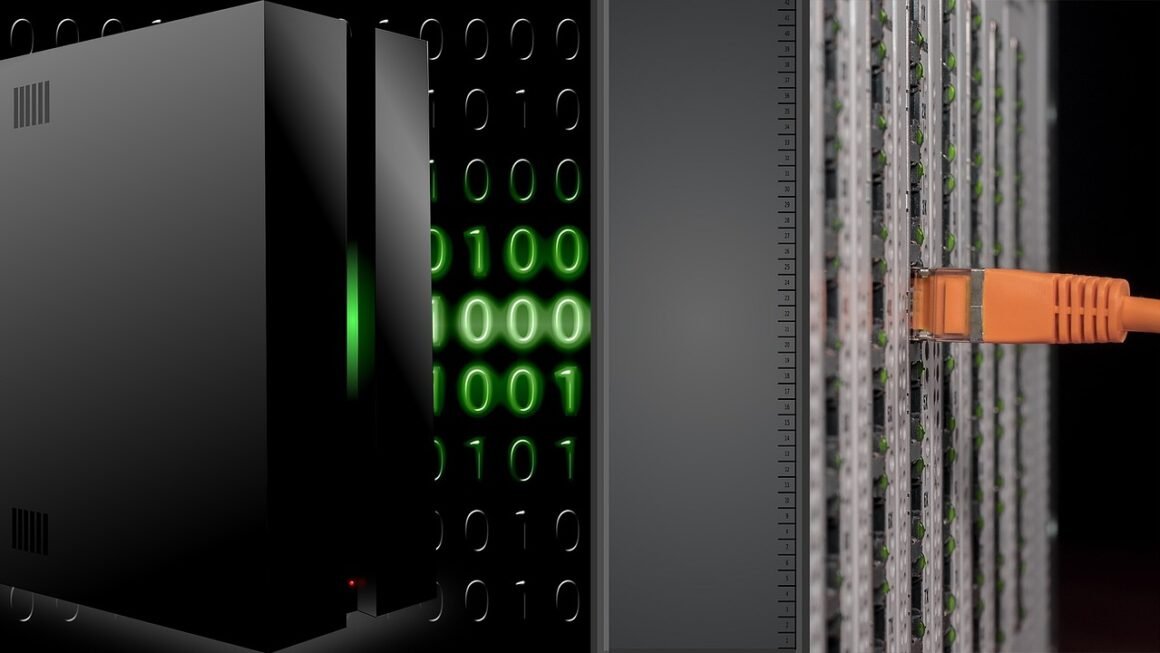Imagine your company’s website suddenly displaying a ransom note, your customer data being held hostage, or sensitive internal emails leaked to the public. This isn’t a scene from a tech thriller; it’s the reality of a cyber attack, a growing threat to businesses of all sizes. Understanding these attacks, their potential impact, and how to defend against them is crucial for survival in today’s digital landscape.
Understanding Cyber Attacks
Cyber attacks are malicious attempts to gain unauthorized access to computer systems, networks, or digital devices to steal, alter, disrupt, disable, or destroy information. They can range from opportunistic attacks targeting vulnerabilities in software to highly sophisticated, targeted campaigns orchestrated by state-sponsored actors.
Types of Cyber Attacks
- Malware Attacks: Malware, short for malicious software, encompasses various types of threats:
Viruses: Infect files and spread through user interaction, like opening infected attachments.
Worms: Self-replicating malware that spreads across networks without human intervention.
Trojans: Disguise themselves as legitimate software to trick users into installing them, often containing backdoors for attackers.
Ransomware: Encrypts data and demands a ransom payment for its decryption. Example: LockBit, a prominent ransomware group, has targeted numerous organizations globally, demanding millions of dollars in ransom.
Spyware: Secretly monitors user activity and steals sensitive information.
- Phishing Attacks: Deceptive attempts to acquire sensitive information like usernames, passwords, and credit card details by disguising as a trustworthy entity.
Spear Phishing: Targeted phishing attacks aimed at specific individuals or groups within an organization. Example: An email appearing to be from the CEO requesting an urgent wire transfer to a fake vendor account.
Whaling: Phishing attacks targeted at high-profile individuals, such as CEOs or CFOs.
- Denial-of-Service (DoS) and Distributed Denial-of-Service (DDoS) Attacks: Overwhelm a server or network with traffic, rendering it unavailable to legitimate users.
DoS: Attack from a single source.
* DDoS: Attack from multiple, often compromised, devices (a botnet). Example: A DDoS attack could flood a website with millions of requests, causing it to crash.
- Man-in-the-Middle (MitM) Attacks: Intercept communication between two parties without their knowledge, allowing the attacker to eavesdrop or manipulate the data being exchanged. Example: An attacker intercepts data between a user and a Wi-Fi hotspot, stealing login credentials.
- SQL Injection: Exploits vulnerabilities in database-driven applications to gain unauthorized access to the database. Example: An attacker inputs malicious code into a website’s search bar, granting them access to the user database.
Attack Vectors
- Email: The most common attack vector, often used for phishing and malware distribution.
- Websites: Compromised websites can host malware or be used to launch phishing attacks.
- Removable Media: USB drives and other removable media can be used to spread malware.
- Software Vulnerabilities: Exploiting vulnerabilities in operating systems and applications.
- Social Engineering: Manipulating individuals into divulging sensitive information or performing actions that compromise security.
The Impact of Cyber Attacks
The consequences of a cyber attack can be devastating, ranging from financial losses and reputational damage to legal liabilities and operational disruptions.
Financial Losses
- Direct Costs: Ransom payments, data recovery costs, system repair expenses. According to IBM’s 2023 Cost of a Data Breach Report, the average cost of a data breach globally reached $4.45 million.
- Indirect Costs: Business interruption, lost productivity, legal and regulatory fines.
- Reputational Damage: Loss of customer trust, negative media coverage, decreased stock value.
Operational Disruption
- System Downtime: Inability to access critical systems and data, hindering business operations.
- Data Loss: Permanent loss or corruption of valuable data, impacting business intelligence and decision-making.
- Supply Chain Disruption: Cyber attacks targeting suppliers can disrupt the entire supply chain.
Legal and Regulatory Consequences
- Data Breach Notification Laws: Organizations are legally required to notify affected individuals and regulatory bodies in the event of a data breach. Failure to comply can result in hefty fines.
- Compliance Violations: Cyber attacks can lead to violations of industry-specific regulations such as HIPAA (healthcare) and PCI DSS (payment card industry).
- Lawsuits: Affected individuals or organizations may file lawsuits seeking compensation for damages caused by the cyber attack.
Prevention and Mitigation Strategies
Proactive cybersecurity measures are essential for preventing and mitigating the impact of cyber attacks.
Implement Strong Security Measures
- Firewall: Acts as a barrier between your network and external threats.
- Antivirus and Anti-Malware Software: Detects and removes malicious software.
- Intrusion Detection and Prevention Systems (IDS/IPS): Monitors network traffic for suspicious activity and takes automated actions to block or mitigate threats.
- Multi-Factor Authentication (MFA): Requires multiple forms of verification for user login, making it harder for attackers to gain unauthorized access. Example: Using a password and a code sent to a mobile device.
- Regular Security Audits and Penetration Testing: Identifies vulnerabilities in your systems and networks.
- Data Encryption: Encrypts sensitive data both in transit and at rest, protecting it from unauthorized access.
Employee Training and Awareness
- Phishing Awareness Training: Educate employees about phishing techniques and how to identify suspicious emails. Conduct simulated phishing campaigns to test their knowledge.
- Password Security Best Practices: Enforce strong password policies, including minimum length, complexity, and regular password changes.
- Social Engineering Awareness: Train employees to be wary of social engineering tactics used to manipulate them into divulging sensitive information.
- Incident Reporting Procedures: Establish clear procedures for reporting suspected security incidents.
Develop an Incident Response Plan
- Identify Key Personnel: Designate a team responsible for responding to security incidents.
- Establish Communication Channels: Define how the incident response team will communicate during an incident.
- Define Incident Response Procedures: Develop detailed procedures for identifying, containing, eradicating, and recovering from security incidents.
- Regularly Test and Update the Plan: Conduct simulations and tabletop exercises to test the effectiveness of the incident response plan and update it as needed.
Emerging Cyber Threats
The cyber threat landscape is constantly evolving, with new threats and attack techniques emerging regularly.
AI-Powered Attacks
- AI-Driven Phishing: AI can be used to create more convincing and personalized phishing emails.
- Automated Malware Generation: AI can automate the process of creating new malware variants, making it harder to detect.
- AI-Enhanced Social Engineering: AI can analyze social media profiles and other online data to create more targeted and effective social engineering attacks.
IoT Vulnerabilities
- Insecure IoT Devices: Many IoT devices have weak security features, making them vulnerable to hacking.
- Botnets Composed of IoT Devices: Attackers can compromise IoT devices and use them to launch DDoS attacks. Example: The Mirai botnet, which used compromised IoT devices to launch large-scale DDoS attacks.
Cloud Security Risks
- Misconfiguration of Cloud Services: Incorrectly configured cloud services can create security vulnerabilities.
- Data Breaches in the Cloud: Data stored in the cloud can be vulnerable to breaches if not properly secured.
- Shared Responsibility Model: Understanding the shared responsibility model is crucial for securing cloud environments.
Conclusion
Cyber attacks pose a significant threat to businesses of all sizes. By understanding the different types of attacks, their potential impact, and implementing proactive security measures, organizations can significantly reduce their risk of becoming a victim. Staying informed about emerging threats and continuously improving security practices is essential for navigating the ever-evolving cyber landscape. A proactive approach, including strong security measures, employee training, and a comprehensive incident response plan, is your best defense against the growing threat of cyber attacks.



